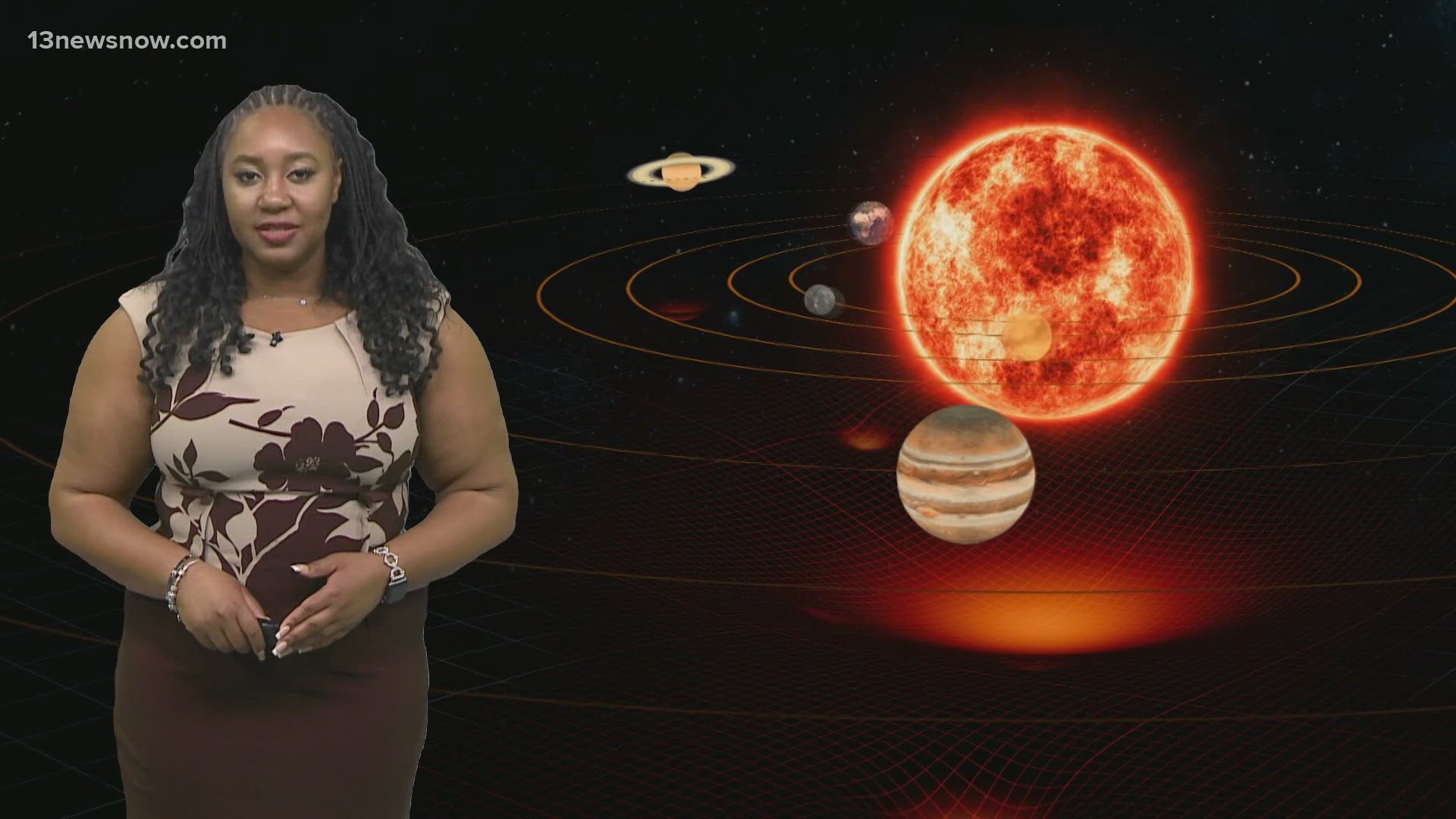NORFOLK, Va. — Earth is the only planet in our solar system that is capable of sustaining human life, and this is why.
The sun is the star at the center of our solar system. Every star has a habitable zone. That zone is a region surrounding the star where liquid water can exist on a planet’s surface.
Earth sits perfectly in that zone. Venus and Mars sit right outside of the habitable zone. Venus is too close to the sun so it’s too hot for liquid water to exist. Any water would simply evaporate. Mars is slightly too far from the sun so any surface weather would turn into ice.
Stars that are smaller than our Sun have a habitable zone that is much closer to that specific star and vice versa: a larger star has a habitable zone that’s much farther away.
According to NASA, finding the habitable zone of other solar systems in our universe may eventually lead astronomers to find life on other planets.
Currently, there is one solar system around 40 light-years away that astronomers are studying for signs of life. Scientists have named this solar system "Trappist-1." A couple of those planets within the "Trappist-1" solar system sit within the habitable zone. Between 2017 and 2021, findings show that those planets in "Trappist-1" are Earth-sized, could hold more water than Earth, and are made up of similar chemicals and minerals.
To learn more about our solar system, we encourage you to visit the Virginia Air and Space Science Center. There, you can walk through the Space Explorer Gallery to play interactive games and read displays that teach you about astronomy.
That’s how your weather works!

